Scaffolding Companies Waterford
Top 10 Scaffolding Builders in Waterford
Get up to 3 Scaffold Services quotes for your project today! Compare profiles, reviews, accreditations, portfolio, etc... and choose the best deal.
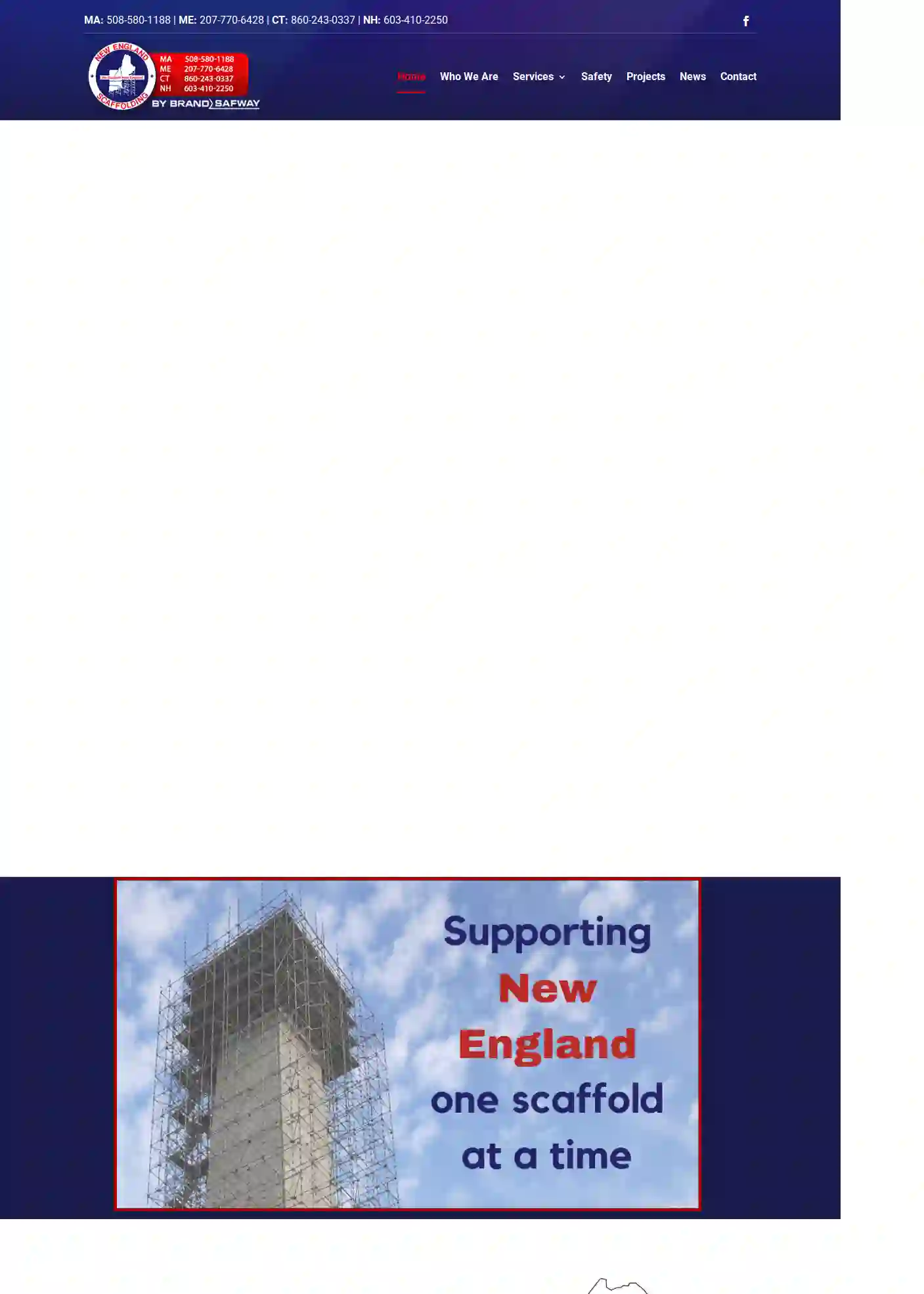
New England Scaffolding
2.54 reviewsNorwell, MA, 412 R Washington St, 02061, USNew England Scaffolding is a leading provider of scaffolding solutions, offering a range of services including scaffolding, shoring, suspended scaffolding, containment, temporary fencing, and debris chutes. With offices in Massachusetts, Maine, Connecticut, and New Hampshire, they prioritize safety and customer satisfaction. Their team of experienced professionals ensures that projects are completed efficiently and effectively, adhering to the highest safety standards. New England Scaffolding is dedicated to delivering top-quality services and building long-lasting relationships with clients.
- Services
- Why Us?
- Accreditations
- Our Team
- Testimonials
- Gallery
Get Quote
SafwayAtlantic by BrandSafway – New Jersey
4.423 reviews123 Main St, Newark, 07001, USSafway Atlantic by BrandSafway New Jersey is a leading provider of scaffolding solutions, offering a wide range of services including scaffolding rental, scaffolding installation, and scaffolding safety training. With a strong commitment to safety and customer satisfaction, the team at Safway Atlantic by BrandSafway New Jersey strives to provide top-notch service and support to clients across various industries.
- Services
- Why Us?
- Accreditations
- Our Team
- Testimonials
Get Quote
Nutmeg Scaffold & Ladder Co
4.97 reviewsWilton, CT, 743 Danbury Road, 06897, USNutmeg Scaffold is a leading provider of scaffolding rental and sales services in Connecticut, serving Fairfield County for over 50 years. With a wide range of commercial-quality products, they aim to provide the contractor community with top-of-the-line scaffolding solutions. Their staff can help calculate the required scaffolding for any project and deliver it to the job site, ensuring maximum efficiency and safety. Nutmeg Scaffold offers various services including scaffolding rental, pump jack sales and rental, and scaffolding in use. They prioritize safety and environmental consciousness, recommending the use of scaffolding stair towers for upper-level entry and promoting eco-friendly practices.
- Services
- Why Us?
- Accreditations
- Our Team
- Testimonials
- Gallery
Get Quote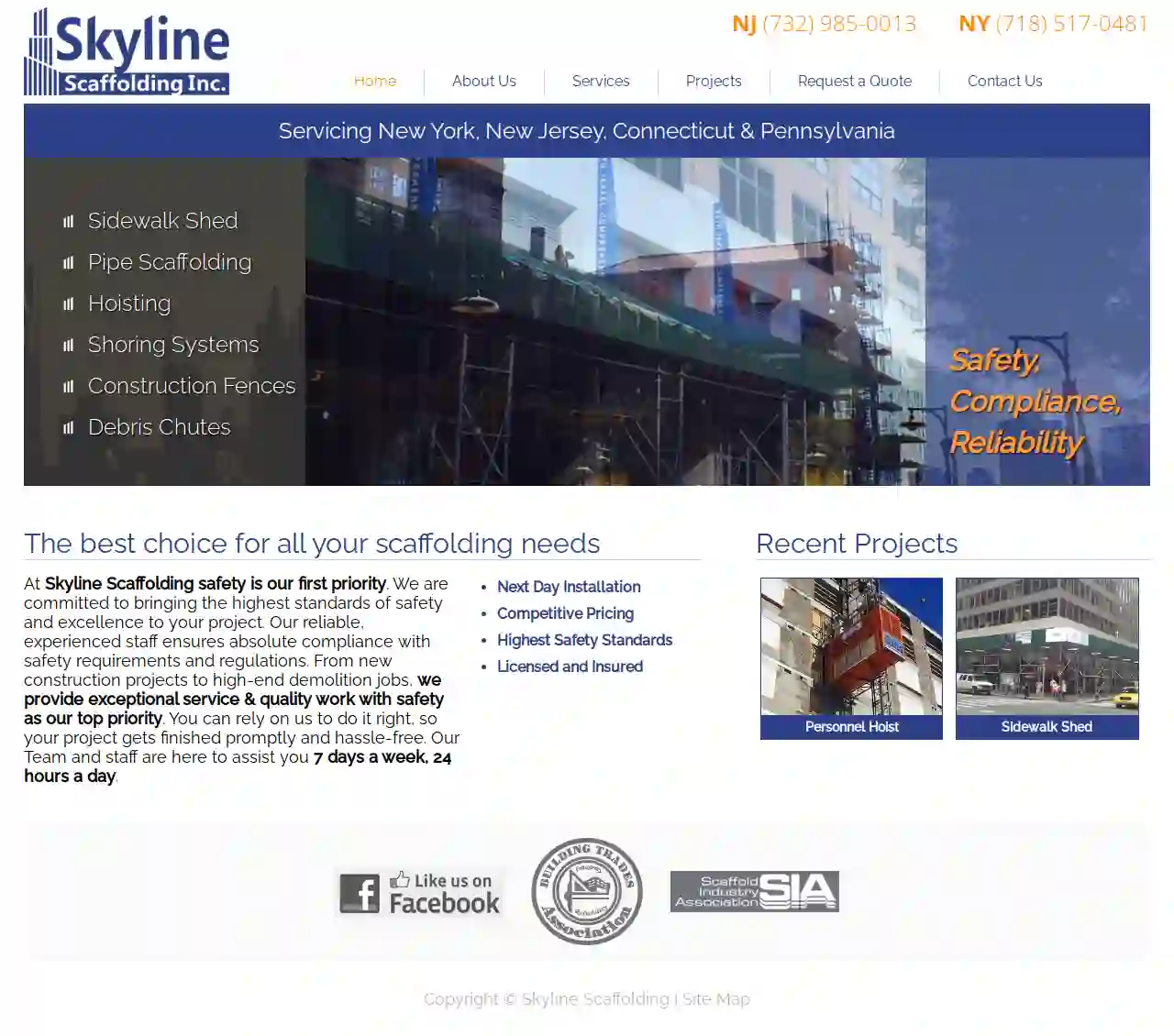
Skyline Scaffolding Group, Inc.
4.49 reviews740 Ramsey Avenue, Hillside, 07205, USAt Skyline Scaffolding, safety is our top priority. We are committed to bringing the highest standards of safety and excellence to your project. Our reliable, experienced staff ensures absolute compliance with safety requirements and regulations. From new construction projects to high-end demolition jobs, we provide exceptional service & quality work with safety as our top priority. We have over 25 years of experience in the field of scaffolding and bring that experience to your project. We are passionate about what we do and look for ways to provide the best possible service to our clients. For our customer’s convenience, we provide all of our services to New York, New Jersey, Pennsylvania, and Connecticut.
- Services
- Why Us?
- Accreditations
- Our Team
- Gallery
Get Quote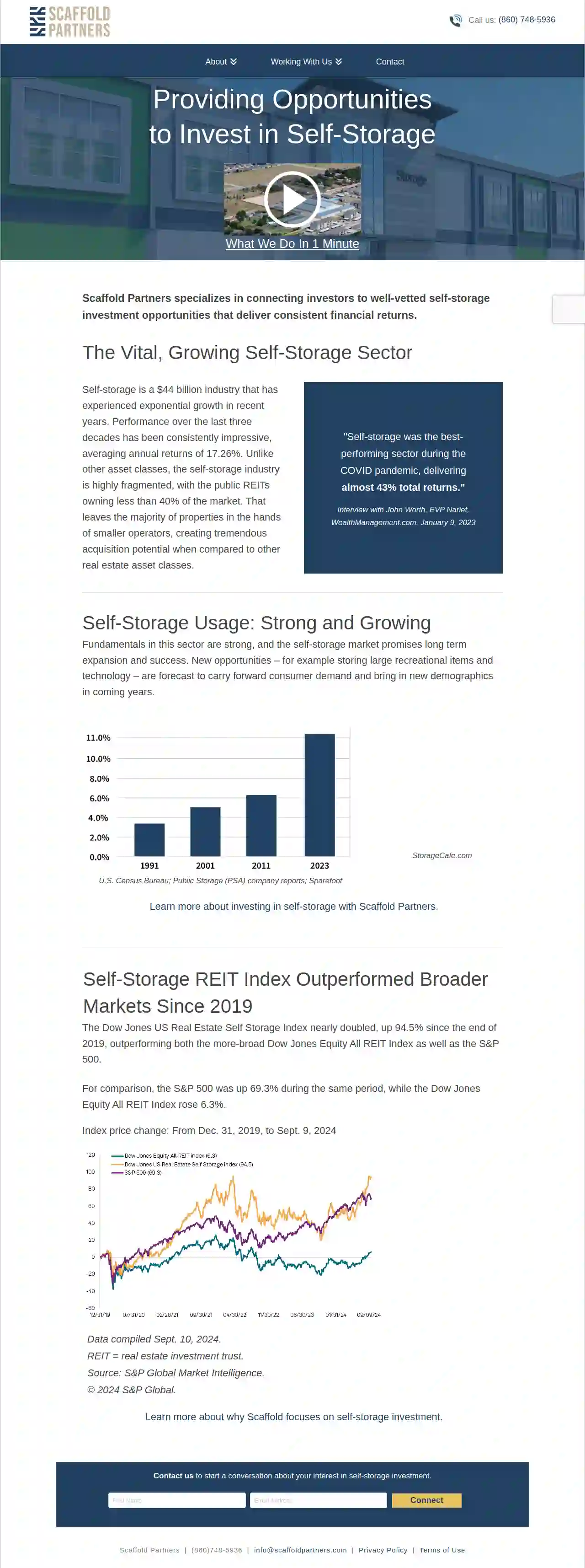
Scaffold Partners
Waterbury, USScaffold Partners specializes in connecting investors to well-vetted self-storage investment opportunities that deliver consistent financial returns. The self-storage industry is a $44 billion industry that has experienced exponential growth in recent years, averaging annual returns of 17.26%. Unlike other asset classes, the self-storage industry is highly fragmented, with the public REITs owning less than 40% of the market. This leaves the majority of properties in the hands of smaller operators, creating tremendous acquisition potential when compared to other real estate asset classes. Fundamentals in this sector are strong, and the self-storage market promises long term expansion and success. New opportunities – for example storing large recreational items and technology – are forecast to carry forward consumer demand and bring in new demographics in coming years.
- Services
- Why Us?
- Accreditations
- Gallery
Get Quote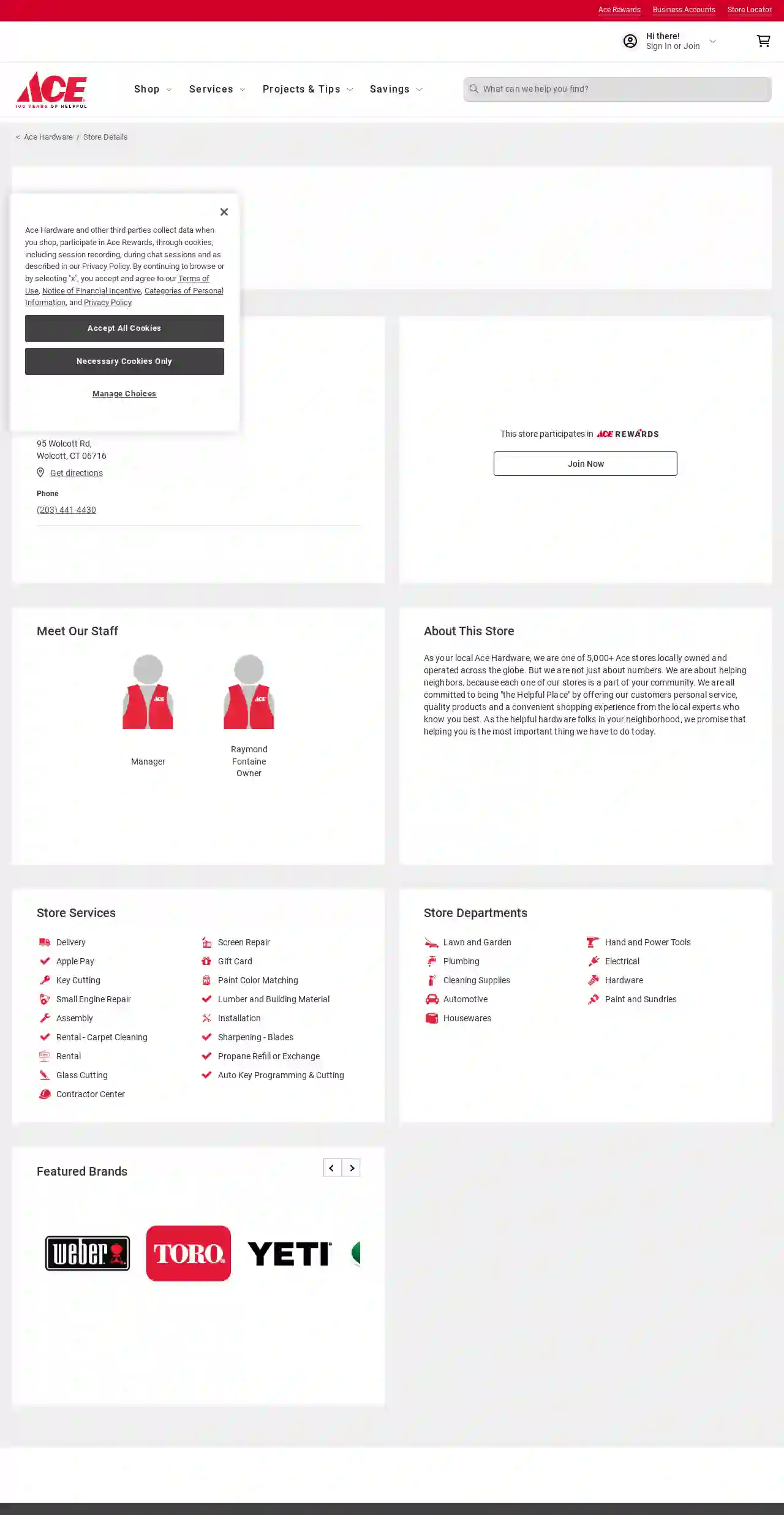
Ace Hardware of Wolcott
4.567 reviews95 Wolcott Rd, Wolcott, 06716, USAs your local Ace Hardware, we are one of 5,000+ Ace stores locally owned and operated across the globe. But we are not just about numbers. We are about helping neighbors, because each one of our stores is a part of your community. We are all committed to being "the Helpful Place" by offering our customers personal service, quality products and a convenient shopping experience from the local experts who know you best. As the helpful hardware folks in your neighborhood, we promise that helping you is the most important thing we have to do today.
- Services
- Why Us?
- Accreditations
- Our Team
- Gallery
Get Quote
Unique Scaffolding Systems, LLC
4.37 reviews808 Fairfield Avenue, Kenilworth, 07033, USAt Unique Scaffolding Systems, we have the highest standards in the industry with reliability, consistent high quality workmanship, competitive prices, and high regard for safety. We are fully insured, fully trained and OSHA compliant. We consistently exceed customer expectations. We specialize in all aspects of scaffolding including systems scaffold, heavy duty side walk bridges, stair towers and shoring. We also offer hoists, netting, enclosures, and more. We are a NJ-based, owner-operated, scaffold erecting and dismantling contractor doing business in the tri-state area since 2008. We will provide an access solution to any project, including commercial buildings, schools, churches, municipal projects, water tank towers and refineries. We also specialize in scaffolding for the restoration of landmark-designated historic buildings and structures. We are available 24 hours a day, 7 days a week. Engineered drawings are available for any project, no matter how simple or complex.
- Services
- Why Us?
- Gallery
Get Quote
Warning Lights Inc
4.84 reviewsHamden, USAt Equipment Rental CT, we offer a wide range of equipment rentals for various industries, including landscaping, construction, and masonry. Our extensive inventory includes air compressors, boom lifts, concrete mixers, and more. With our equipment, you can expedite your project and get the job done efficiently. We deliver our equipment to your site, so you can focus on your project. Contact us today to learn more about our equipment rentals and how we can help you.
- Services
- Why Us?
- Gallery
Get Quote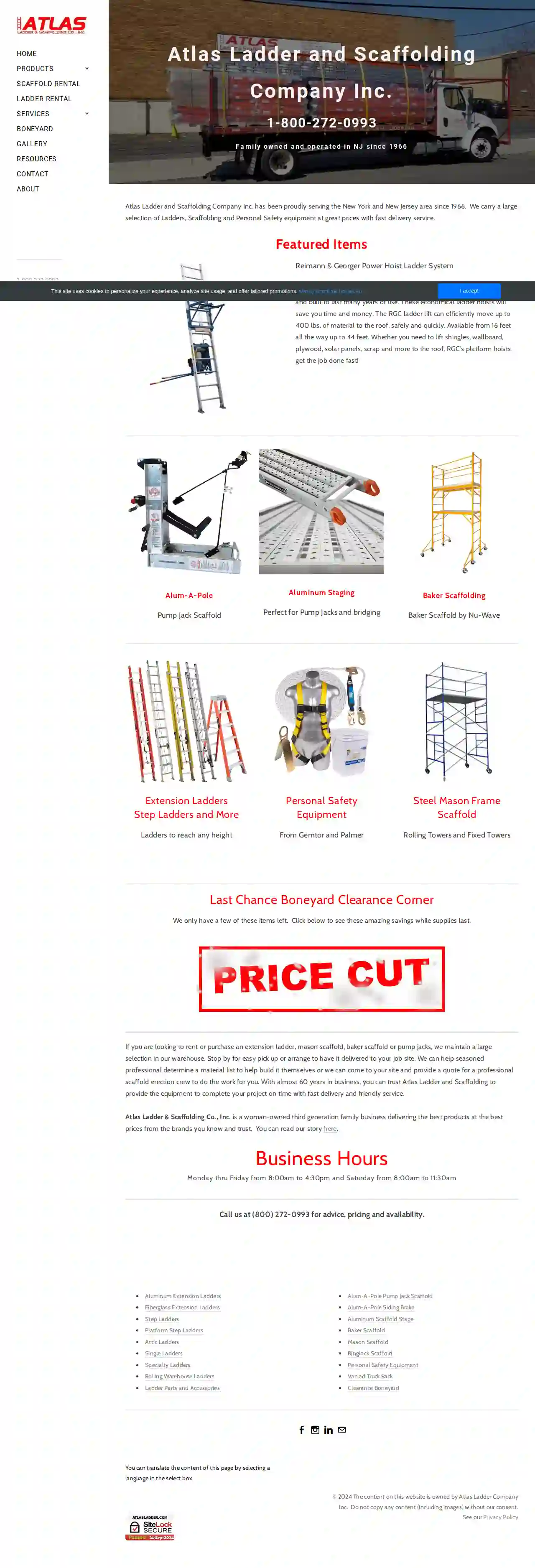
Atlas Ladder & Scaffolding Company Inc.
4.831 reviews123 Ladder Lane, Los Angeles, 90001, USAtlas Ladder Co. is a family-owned and operated business specializing in ladder sales, rentals, and custom ladder manufacturing. With over 50 years of experience, we aim to provide top-quality products and exceptional customer service. Our mission is to ensure safety and efficiency for our clients, offering a wide range of ladders suitable for various industries and applications.
- Services
- Why Us?
- Accreditations
- Our Team
- Testimonials
Get Quote
Scaffolding Towers of America
414 reviews330 Roycefield Rd., Building J, Hillsborough, 08844, USScaffolding Towers of America, Inc. is New Jersey's leading provider of scaffolding and access equipment. With over 50 years of experience, we offer a wide range of products and services to meet the needs of our clients, from small contractors to large corporations. Our commitment to quality, safety, and customer service has made us the trusted partner for scaffolding solutions throughout the Tri-State area. We carry a comprehensive inventory of Bil-Jax frame scaffolding and components, as well as system scaffolding from Layher and A-1 Scaffolding. Our IN-STOCK selection of scaffolding equipment is the largest in New Jersey, and our range of OSHA compliant products includes scaffold frames, rolling towers, stair towers, plank, aluminum platforms, baker scaffolding, leveling jacks, casters, braces, climbing ladders, hoist arms, guard rails, swivel clamps, straight clamps, and well wheels. We offer both new and used scaffold for sale. If you know your piece count, we can quickly provide a quote for you. If you aren't sure, simply call us with the required dimensions and we can get you an estimate. Most scaffold orders are available for pick up the same day. We can also deliver your scaffold order for an additional charge. Advance notice is required for scaffold delivery. Scaffold installation is also available. In addition to our scaffolding products, we also carry a variety of Werner products designed to provide access. These include various heights of stepladders, extension ladders, platform ladders, podium ladders, aluminum and steel pump jacks, and 20" wide 2-man stages (picks). All products are IN STOCK and available for pick up today. Delivery is also available. Our team of experienced professionals is dedicated to providing our clients with the highest quality scaffolding solutions. We are committed to safety, reliability, and customer satisfaction. Contact us today to learn more about our products and services.
- Services
- Why Us?
- Gallery
Get Quote
Over 2,353+ Scaffolding Businesses onboarded
Our scaffolding contractors operate in Waterford and beyond!
ScaffoldingHQ has curated and vetted the Best Scaffolding Contractors in and around Waterford. Find a trustworthy contractor today.
Frequently Asked Questions About Scaffolding Companies
- Licensing and Insurance: Verify their licenses are current and that they have adequate insurance coverage.
- Experience: Choose a company with a history of successfully completing similar projects. Ask for references and check their portfolio.
- Safety Record: Inquire about their safety practices and accident history. A strong safety culture is essential.
- Professionalism: Observe their communication, responsiveness, and attention to detail. A reputable company will be organized and transparent.
- Reviews and Testimonials: Read online reviews and feedback from previous clients to assess their reputation.
- Industry Affiliations: Membership in professional organizations like the NASC (National Access & Scaffolding Confederation) indicates a commitment to industry standards.
- Project Size and Complexity: The height, configuration, and accessibility of the scaffolding will influence the amount of materials and labor required.
- Scaffolding Type: Different scaffolding systems (tube and clamp, system scaffolding, suspended scaffolding) have varying costs.
- Duration of Rental: The length of time you need the scaffolding will affect the overall rental price.
- Location: Labor costs and material availability can differ based on your location.
- Additional Services: Some companies may offer additional services like erection, dismantling, or transportation, which can add to the cost.
- A temporary structure with a larger platform for workers and materials.
- Offers greater stability and working space.
- Suitable for tasks requiring movement and multiple workers.
- Used for higher elevations and more complex projects.
- Used for reaching specific points at height for short durations.
- Less stable than scaffolding, requiring more caution and balance.
- Not suitable for tasks involving heavy materials or extended work periods.
- Hire Professionals: Just like erection, dismantling should be done by qualified and experienced scaffolding erectors.
- Reverse the Erection Process: The dismantling process should generally follow the reverse order of erection.
- Clear the Area: Ensure the area below is free from people and obstacles.
- Lower Materials Safely: Use ropes or other safe methods to lower dismantled components to the ground.
- Inspect Components: As components are removed, inspect them for damage and store them properly for future use.
How do I know if a scaffolding company is reputable?
How much does scaffolding cost to hire in the USA?
What is the difference between a scaffold and a ladder?
Scaffolding:
How do I dismantle scaffolding safely?
How do I know if a scaffolding company is reputable?
- Licensing and Insurance: Verify their licenses are current and that they have adequate insurance coverage.
- Experience: Choose a company with a history of successfully completing similar projects. Ask for references and check their portfolio.
- Safety Record: Inquire about their safety practices and accident history. A strong safety culture is essential.
- Professionalism: Observe their communication, responsiveness, and attention to detail. A reputable company will be organized and transparent.
- Reviews and Testimonials: Read online reviews and feedback from previous clients to assess their reputation.
- Industry Affiliations: Membership in professional organizations like the NASC (National Access & Scaffolding Confederation) indicates a commitment to industry standards.
How much does scaffolding cost to hire in the USA?
- Project Size and Complexity: The height, configuration, and accessibility of the scaffolding will influence the amount of materials and labor required.
- Scaffolding Type: Different scaffolding systems (tube and clamp, system scaffolding, suspended scaffolding) have varying costs.
- Duration of Rental: The length of time you need the scaffolding will affect the overall rental price.
- Location: Labor costs and material availability can differ based on your location.
- Additional Services: Some companies may offer additional services like erection, dismantling, or transportation, which can add to the cost.
What is the difference between a scaffold and a ladder?
Scaffolding:
- A temporary structure with a larger platform for workers and materials.
- Offers greater stability and working space.
- Suitable for tasks requiring movement and multiple workers.
- Used for higher elevations and more complex projects.
- Used for reaching specific points at height for short durations.
- Less stable than scaffolding, requiring more caution and balance.
- Not suitable for tasks involving heavy materials or extended work periods.
How do I dismantle scaffolding safely?
- Hire Professionals: Just like erection, dismantling should be done by qualified and experienced scaffolding erectors.
- Reverse the Erection Process: The dismantling process should generally follow the reverse order of erection.
- Clear the Area: Ensure the area below is free from people and obstacles.
- Lower Materials Safely: Use ropes or other safe methods to lower dismantled components to the ground.
- Inspect Components: As components are removed, inspect them for damage and store them properly for future use.